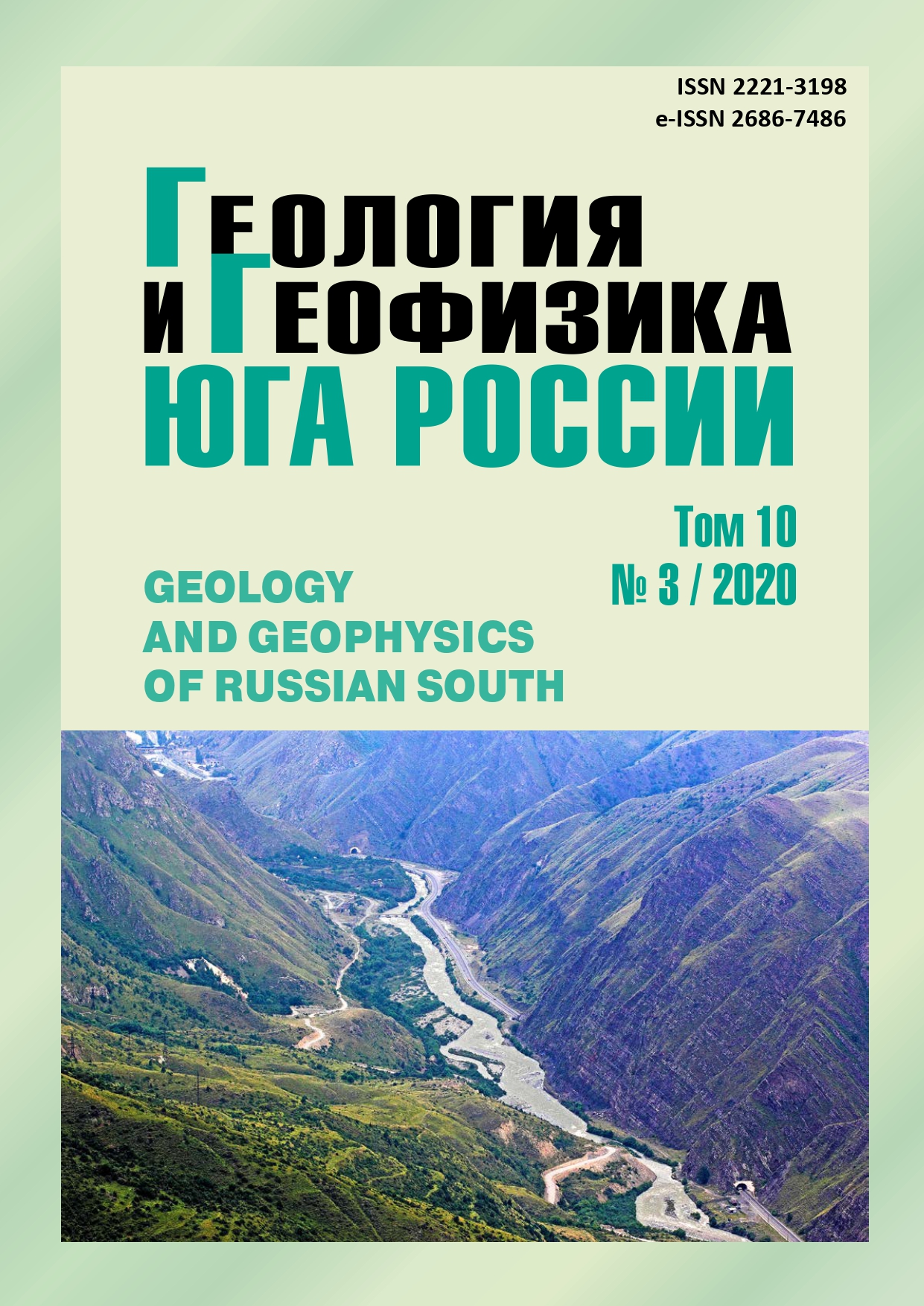Geodynamics of the Talish region according to earthquake source mechanisms and GPS-stations
Abstract
Relevance. In addition, the article provides a description of the tectonic structure of the region under study, and also analyzes the geodynamics of the Talish region using data from the mechanisms of earthquake sources. Aim of the work was to determine the velocities of modern horizontal displacements of individual tectonic blocks of the Talish region and to analyze their influence on strong earthquakes that occurred in 2016 and 2019yy. Methods. Based on the method of polarity of the first arrivals of longitudinal waves, the mechanisms of earthquake sources were analyzed. The analysis showed that in the studied region the type of movement predominates – reverse faults and strike-slips. The angles of incidence for motions of various types exceed 45°, which indicates a rather steep immersion of fault zones. This is consistent with the fact that in the studied zone the majority of transverse faults have angles of incidence of 50‑90°, that is, angles quite close to the vertical. The main influence on seismic activity is exerted by the Talish, Predtalish, Yardimli and Astara faults. Results. Based on the results obtained, a schematic map of the orientation of the compression and extension axes of the studied strong earthquakes was constructed. On the basis of a cataclastic analysis of the mechanisms of earthquake sources with ml> 3.0, it was established that most of the study area is subject to compression, strike-slip faults were noted in the Lerik and Yardimla regions. For the Talish region, three main types of shifts are established: reverse faults (36 %), strike-slips (34 %) and normal faults (30 %). An analysis of horizontal velocities according to GPS observations showed the movement of the surface of the earth’s crust in the northwest direction relative to Eurasia. A decrease in speed was noted at the observation points PQLG, XNGG, ZKTG, ATGG, IMLG and GBLG located perpendicular to the Main Caucasian Thrust. GPS observation points located along the Main Caucasian Thrust show a decrease in speed in a westerly direction. C-NE motion of the earth’s surface is interpreted as one of the reasons for the accumulation of stresses on this thrust.


